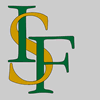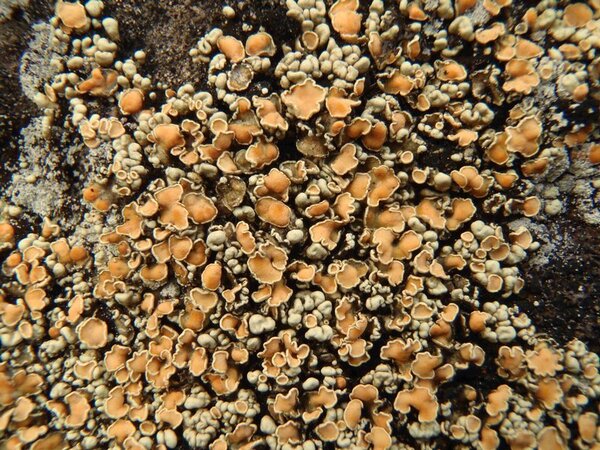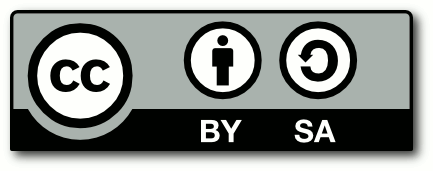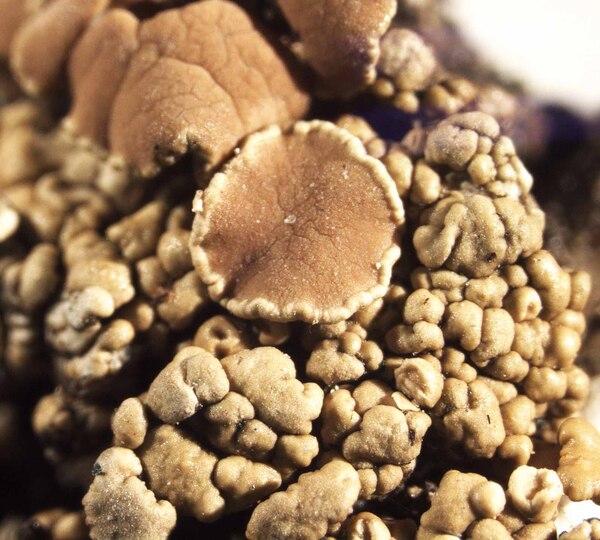Rhizoplaca subdiscrepans (Nyl.) R. Sant.
The Lichens of Sweden and Norway: 278, 1984. Basionym: Squamaria chrysoleuca var. subdiscrepans Nyl. - Flora, 44: 718, 1861.
Synonyms: Lecanora subdiscrepans (Nyl.) Stizenb.; Sedelnikovaea subdiscrepans (Nyl.) S.Y. Kondr., L. Lőkös & Farkas; Squamaria chrysoleuca var. lecanorea Anzi?
Distribution: N - Lomb (Ravera & al. 2022b).
Description: Thallus crustose-placodioid to subsquamulose-umbilicate, loosely attached, pale yellowish green to whitish-green, rather glossy, of scattered to crowded, 0.3-1.3 mm wide, to 7 mm thick, convex-bullate, sinuous and plicate areoles-squamules attached by a narrowed base, the marginal ones often slightly elongate. c. 1-2.5 mm long, 0.5-1.5 mm wide, discrete to slightly overlapping, flat to convex, broadened and crenate-incised at tips, forming 1-5(-7) cm wide patches; lower surface pale brown to almost black in central parts, erhizinate. Upper cortex of strongly gelatinized hyphae, often heavily inspersed with brownish crystals soluble in K, the cell walls with isolichenan; medulla white, loose. Apothecia lecanorine, 0.7-3(-5) mm across, sessile and constricted at base, with a slightly concave to flat, pale pink to orange, pruinose disc, and a 0.1-0.2 mm wide, entire to flexuose, somewhat raised and slightly inflexed, usually persistent thalline margin. Proper exciple colourless, cupulate; epithecium orange-brown, covered with granules, N-; hymenium pale yellow, 50-80 μm high, not inspersed with oil droplets; paraphyses simple to sparingly branched, the apical cells swollen, 3-5 µm wide; hypothecium pale. Asci 8-spored, clavate, the tholus with a strongly amyloid lateral part, a non-amyloid broadly diverging axial mass with a thick, non-amyloid cap above, and a weakly amyloid outer layer Lecanora-type. Ascospores 1-celled, hyaline, oblong-ellipsoid, (8-)9-12(-13.5) x 5-5-7 μm. Pycnidia black, immersed, with bluish-black ostioles. Conidia thread-like, (10-)15-25 µm long. Photobiont chlorococcoid. Spot tests: cortex: K- or K+ yellow, C+ pale yellow, KC+ yellow, P-, UV-; medulla: K-, C-, KC-, P- or raarely P+ yellow, UV-. Chemistry: usnic and isousnic acid and variable amounts; medulla with either placodiolic or pseudoplacodiolic acid, plus an unidentified fatty acid and terpenoids.Note: on the top of calciferous or basic siliceous boulders frequently visited by birds, with optimum above treeline. For further details see Szczepańska & al. (2020).
Growth form: Crustose
Substrata: rocks
Photobiont: green algae other than Trentepohlia
Reproductive strategy: mainly sexual
Poorly known taxon in need of further study
Commonnes-rarity: (info)
Alpine belt: very rare
Subalpine belt: extremely rare
Oromediterranean belt: absent
Montane belt: absent
Submediterranean belt: absent
Padanian area: absent
Humid submediterranean belt: absent
Humid mediterranean belt: absent
Dry mediterranean belt: absent

Predictive model
Growth form: Crustose
Substrata: rocks
Photobiont: green algae other than Trentepohlia
Reproductive strategy: mainly sexual
Poorly known taxon in need of further study
Commonnes-rarity: (info)
Alpine belt: very rare
Subalpine belt: extremely rare
Oromediterranean belt: absent
Montane belt: absent
Submediterranean belt: absent
Padanian area: absent
Humid submediterranean belt: absent
Humid mediterranean belt: absent
Dry mediterranean belt: absent

Predictive model
 INDEX FUNGORUM
INDEX FUNGORUM
 GBIF
GBIF







